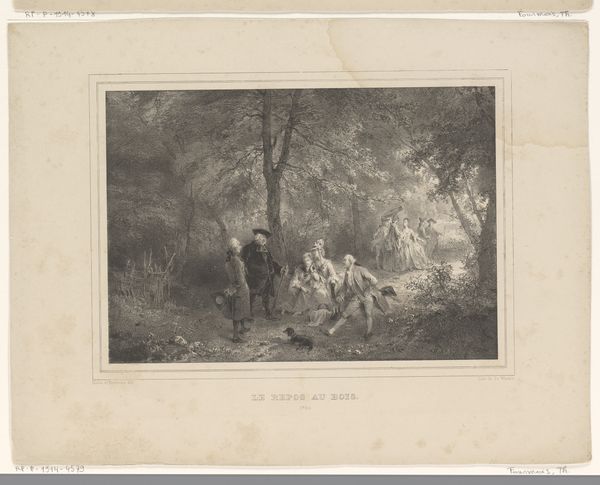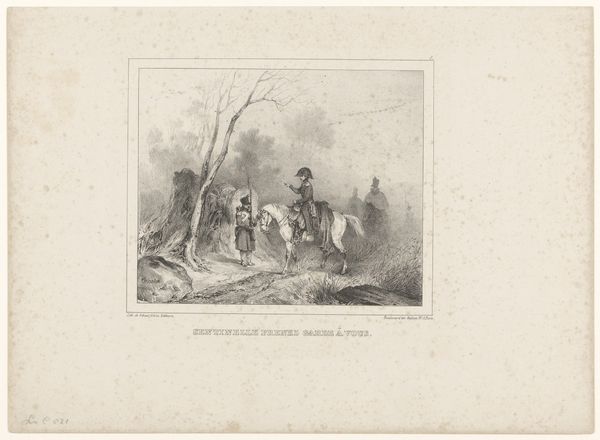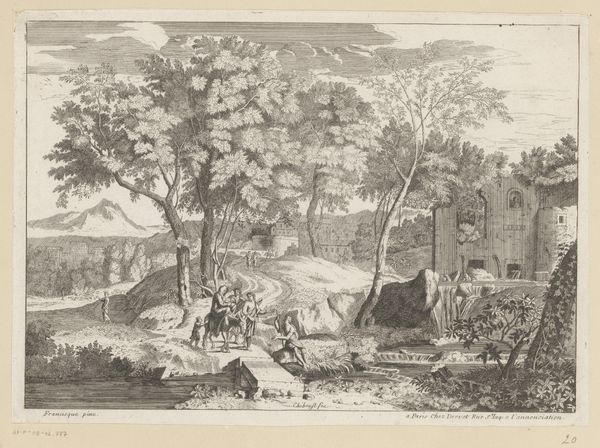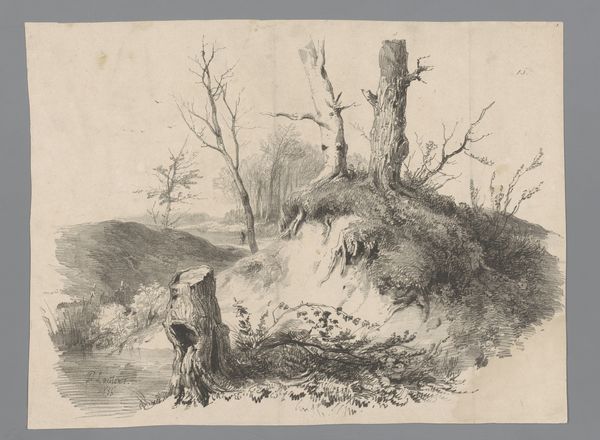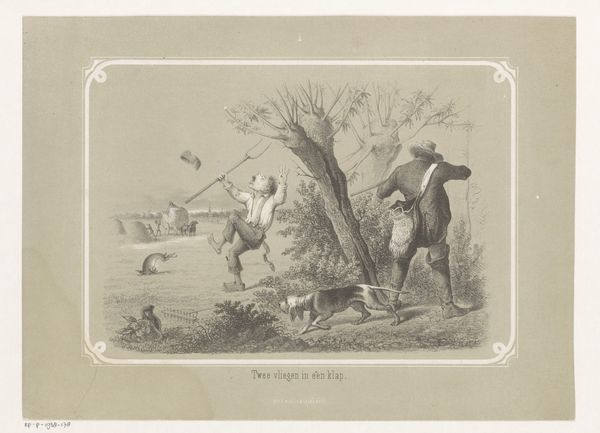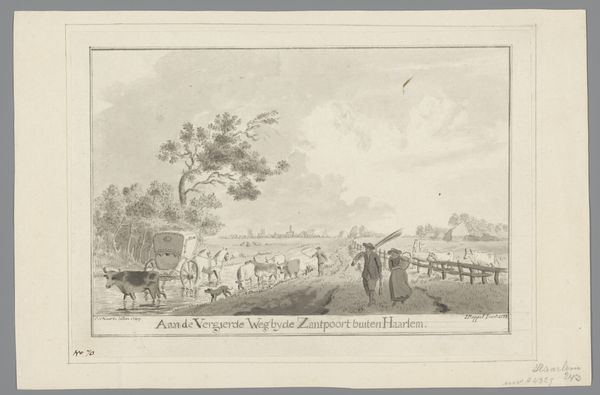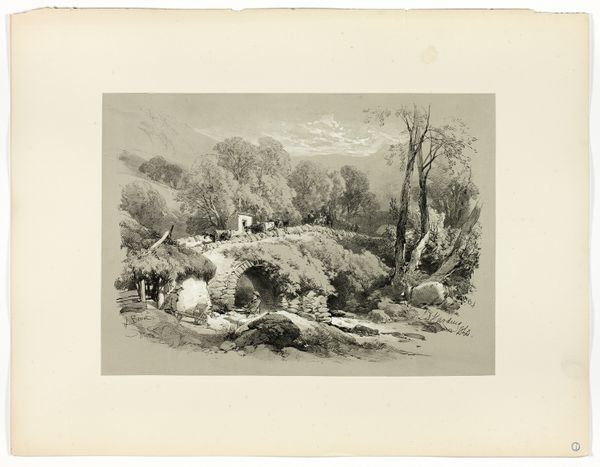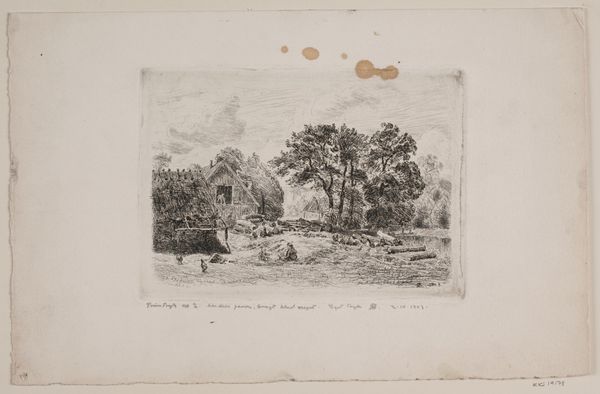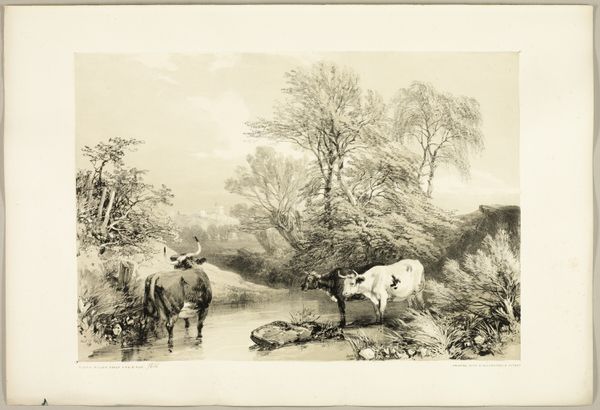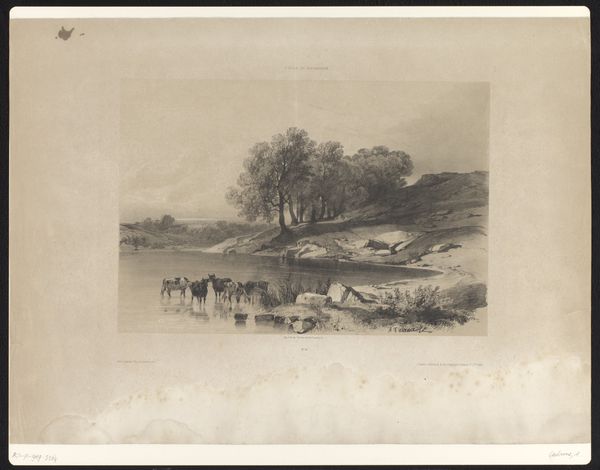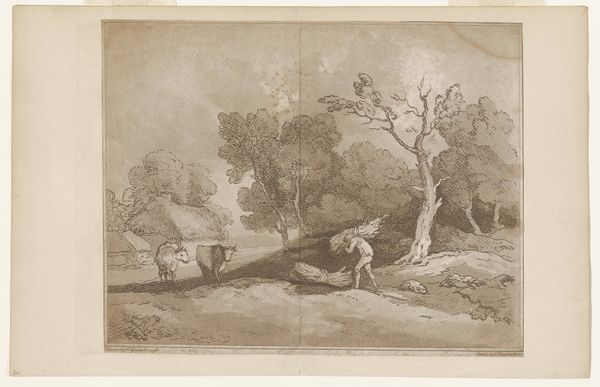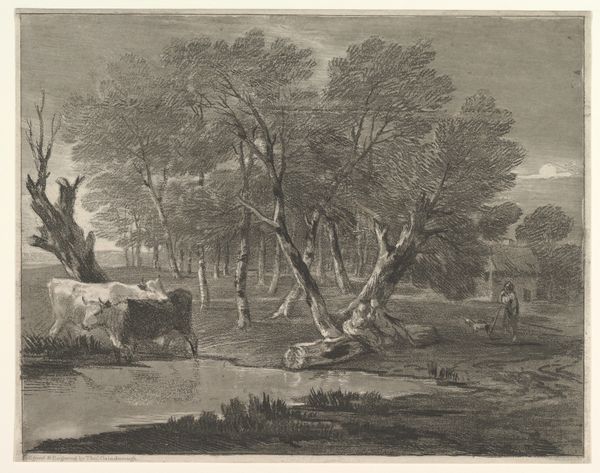
drawing, pencil
#
drawing
#
landscape
#
pencil
#
genre-painting
Dimensions: height 314 mm, width 497 mm
Copyright: Rijks Museum: Open Domain
Editor: So this drawing by Bernard Romain Julien, made between 1844 and 1845, is called "Two Women and a Girl Doing Laundry Outdoors." It's quite detailed for a pencil drawing. I’m immediately struck by the way it romanticizes such a mundane task. What historical context informs a work like this? Curator: It’s interesting that you see it as romanticizing labor. Think about the audience for this kind of image. Drawings like this were often reproduced as prints and circulated among the middle classes. How do you think that might affect how Julien represents these women doing laundry? Editor: Perhaps the artist wanted to show a picturesque vision of the countryside and of simple, hard-working people? Kind of a fantasy detached from reality. Curator: Precisely! Consider the rise of industrialization during this period. Images like this offered a nostalgic counterpoint, idealizing rural life and traditional labor. How does the composition reinforce this idea? Editor: I see that the women are framed by the landscape – the trees, the distant fields. And they are placed near this crumbling architecture... almost like a ruin? Curator: Yes, exactly. This ruin serves to suggest a sense of history, perhaps implying an idealized past. What effect does that have, coupled with the presence of these laundry workers? Editor: It creates a kind of timelessness. As if this scene is just a natural and unchanging part of the landscape, glossing over any real struggles or changes in women’s work. It seems the purpose of images like these was less about reflecting society and more about constructing it. Curator: That's a keen observation! We have to recognize how representations in art contribute to shaping our understanding of the world. Editor: Absolutely, I see that now! Thanks!
Comments
No comments
Be the first to comment and join the conversation on the ultimate creative platform.

